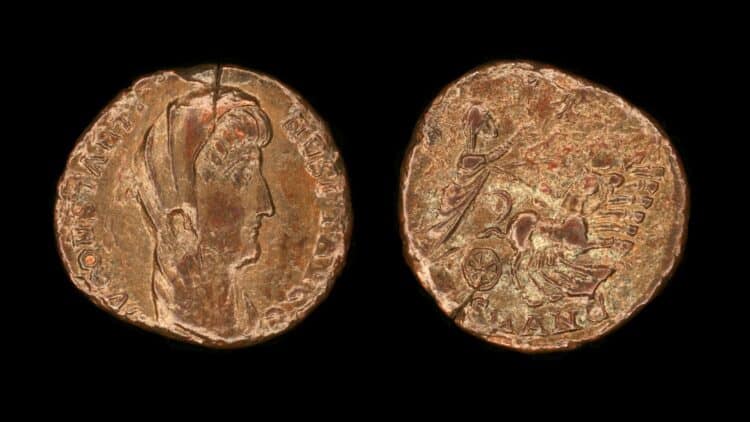What began as a recreational diving session ended up unraveling one of the greatest archaeological discoveries of the season. It all started when an amateur diver submerged himself in the waters of Arzachena, on the northeast coast of Sardinia, Italy. Suddenly, he detected a metallic glint.
The diver quickly alerted the authorities, who mobilized a team of underwater archaeologists and police. After a preliminary estimate based on weight, archaeologists calculated that it was a treasure trove of some 50,000 Roman bronze coins.
Luigi La Rocca, Director General of Archaeology at the Italian Ministry of Culture, has already confirmed that this is “one of the most important numismatic discoveries in recent years.” The sunken treasure offers a glimpse into the trade and economy of the Roman Empire era to which it belongs.
The Lost Shipwreck
Although they have not yet been able to locate the ship, archaeologists believe that this vast number of coins comes from a nearby shipwreck. Apart from the novels, fragments of amphorae have been found that reinforce this theory. Ultimately, it is most likely that it was a merchant ship carrying goods and capital. The coins were scattered across two large areas within a shallow sandy clearing very close to the coast.
The coins have been preserved thanks to the role of a native seaweed. According to archaeologists, the Posidonia oceanica acts as a “silent archive” by creating dense, low-oxygen sediment. This detail is crucial to the exceptional preservation and condition of the coins found. After all, it is not easy to preserve a material such as copper in good condition for no less than 1,700 years.
Coins from the 4th century: the follis
A detailed study has determined that the coins date from the first half of the 4th century AD, approximately between 324 AD and 340 AD, just when Constantine the Great and his son Constantine II reigned. The follis was introduced by Diocletian (c. 294 AD) to reform and stabilize the monetary system of the Roman Empire, which was under immense economic pressure. These were copper coins with a light silver coating that wore off over the centuries.
The inscriptions and marks from the minting workshop of these coins allow historians to trace the trade routes and political changes of that era, for example, by tracking the faces of the emperors.
Who gets to keep the treasure?
Fortunately or unfortunately for amateur divers, in Italy all cultural and archaeological heritage is the inalienable property of the Italian state. However, divers are eligible for monetary compensation (usually a percentage of the appraised value, in accordance with Italian law). This policy encourages the protection of heritage. Having quickly notified the authorities, they will surely be rewarded. For now, conservators face the arduous and slow task of cleaning and cataloging the historic coins in order to study the treasure in detail.
The discovery of coins in China is exceptional testimony to the intensity of trade in Roman times. It says a lot about the Mediterranean economy that such monetary movement and circulation already existed in the 4th century AD. Although the real value of the treasure does not lie in the metal (copper is not as precious as other noble materials), its incalculable value lies in the economic information contained in all these coins. Ultimately, they are a testament to the era of transition and reform in the Roman Empire.
For now, archaeologists continue to search tenaciously for the shipwreck. The seabed off Sardinia remains a treasure trove that holds all the secrets of the Roman Empire’s maritime history. We do not know if they will ever find the shipwreck, as it has not been swept away by the currents and storms of the last two millennia. We can only rejoice that we have found this true monetary and historical treasure.

